Looking for the best homemade bee trap formula? This simple DIY solution uses just a few kitchen staples to safely trap bees and wasps, helping keep your yard sting-free without harmful chemicals.
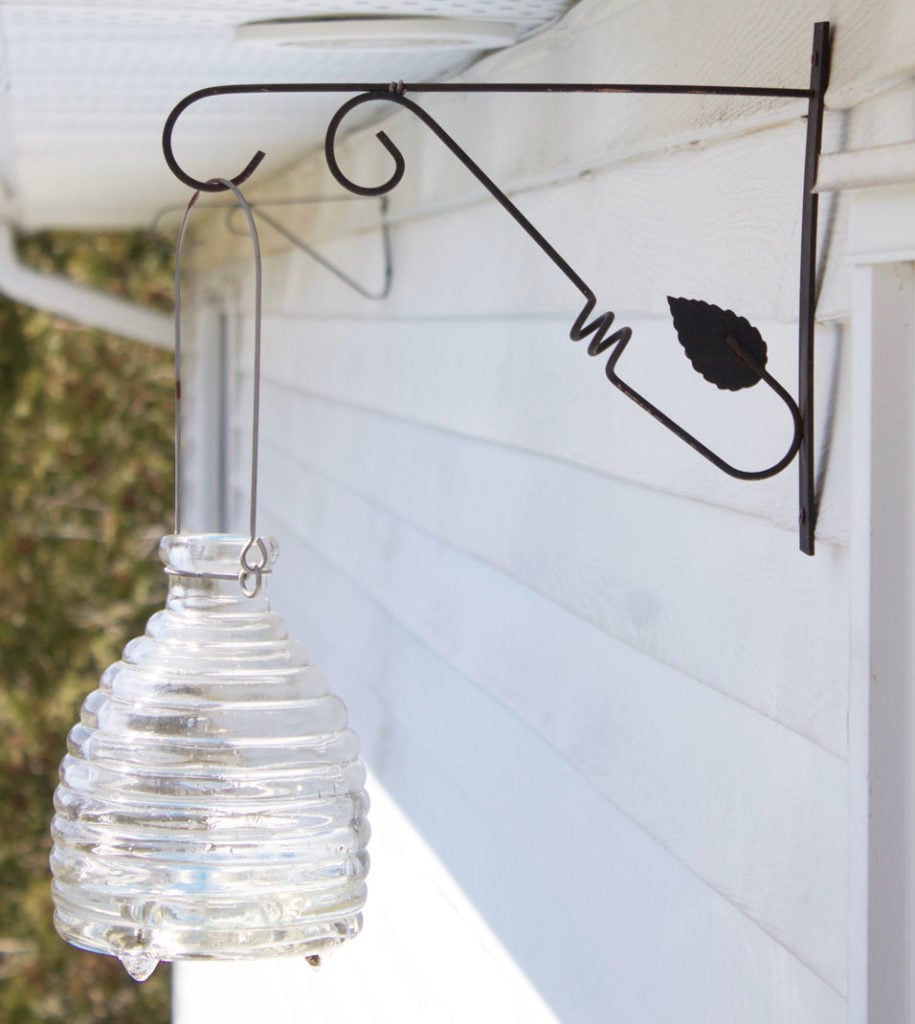
Disclaimer: this post may contain affiliate links, and every purchase made through these links will give me a small commission (at absolutely no extra cost for you!) AS AN AMAZON ASSOCIATE AND REWARDSTYLE MEMBER, I EARN FROM QUALIFYING PURCHASES. See Privacy Policy for additional info.
Hi beauties! Have you ever bought one of those fancy outdoor bee traps, but have had no idea what kind of liquid to put into it? Don't worry. I've got your back. Time to say goodbye to those problem bees
A lot of people look poorly on these bee traps, but what they don't realize is that some people are highly allergic to bees and wasp stings. So if you are one of those people who are going to come at me because I eliminate wasps from my backyard, think about that.
Overall, insects can be quite annoying when you are trying to enjoy your backyard. Sometimes a DIY Natural Bug Spray for Kids just isn't enough! I can't even tell you how many carpenter bees, honey bees, wasps, flies, hornets / yellow jackets we have around our house. Last yea,r we had a major nest that we needed professionals to come and take care of. Some of the honey bees we release back near flowers, far from our deck area, but to be honest, we don't have too many honey bees in our backyard.
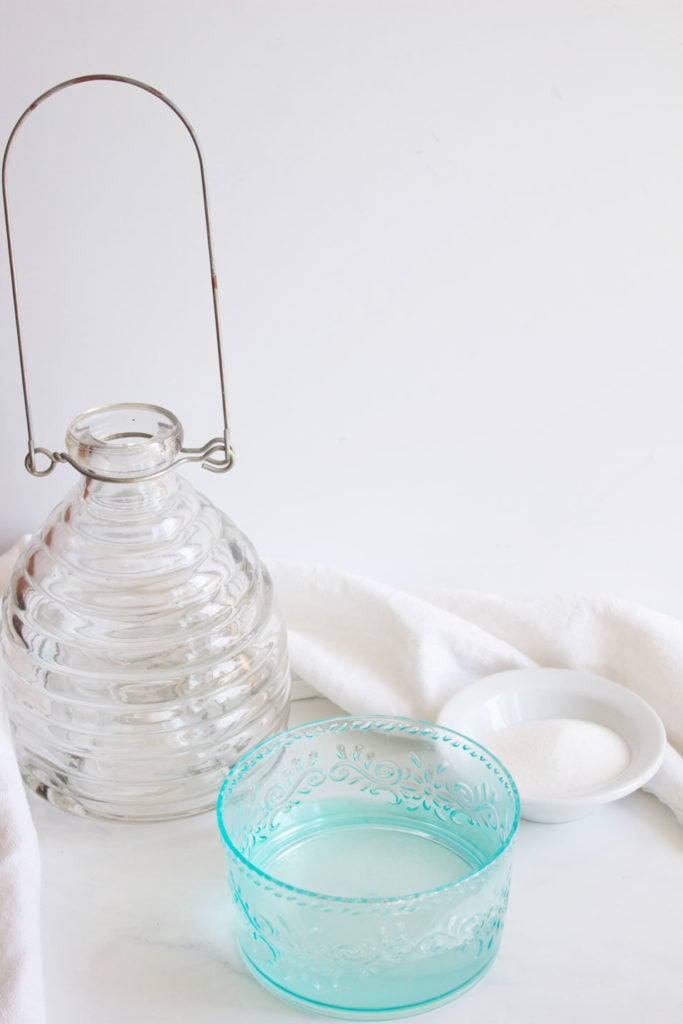
Why Use This Homemade Bee Trap Formula?
I have tried several different combinations when it comes to catching bees and wasps. This is the only one that I have had success with. It is simple, and only requires three ingredients that you probably already have in your kitchen right this second!
This homemade liquid works as a bait to lure the bugs into the jar or fancy glass bottle. The bugs will crawl into the small opening and get trapped. In this concoction, there are no harmful or toxic chemicals. We do not use a spray like many people do. I try to keep things natural around our house because of our young children. You never know with them!
All you need is ¼ cup of sugar, 1 tablespoon lemon juice and a cup of water! I have seen some recipes that add in liquid dish soap but I found that it was way too hard to clean once the soap dried on the bottom of the trap. I have had just as much success with the recipe below. This is by far the best bait recipe (insecticide-free) we have ever used, so let's jump right into the recipe now, shall we?!
Ingredients for Homemade Bee Trap Formula:
This homemade bee trap formula works because the sweet scent attracts bees, while the lemon juice breaks the surface tension of the water, causing them to sink.
- ¼ cup White Sugar or Honey
- 1 tablespoon Lemon Juice
- 1 cup Warm Water
- 1 tablespoon Apple cider vinegar (OPTIONAL)
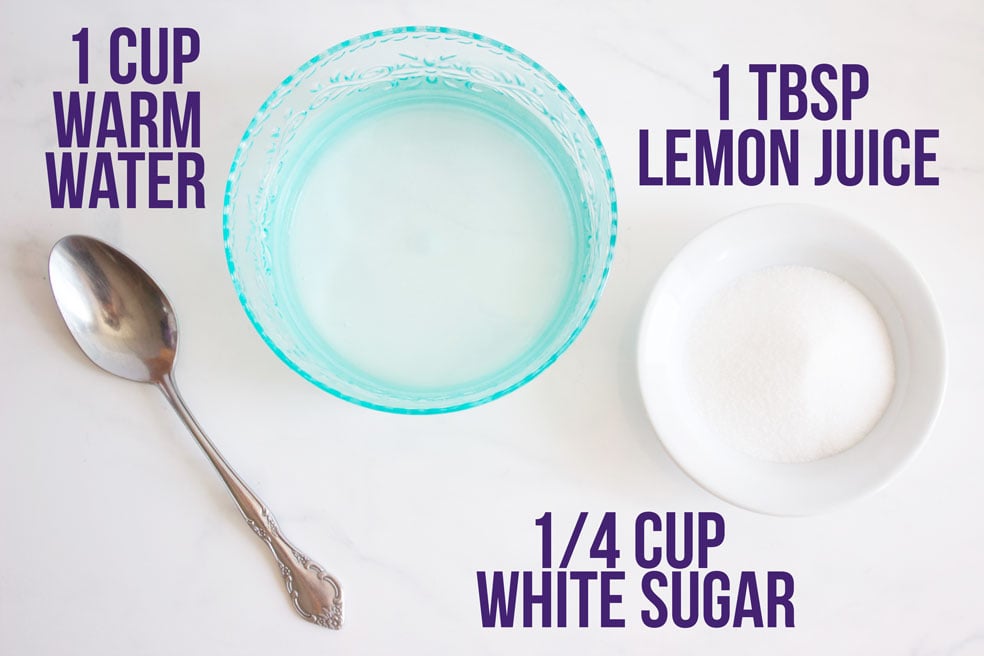
Step-by-Step Instructions:
Step 1: Mix the Ingredients
All you do is combine these ingredients and add them to your bee trap to make this homemade bee trap formula. Ensure the water is warm. Stir sugar into the water until the sugar is dissolved, might take a few minutes.
Step 2: Choose a Trap Container
Next, pour the formula into your container of choice. A recycled plastic bottle, mason jar, or disposable cup with a funnel top works well. The container should be shallow enough for bees to access but deep enough to hold the solution. Clear containers help attract more bees by reflecting light.
Step 3: Place the Trap in High-Traffic Bee Areas
Set your trap in areas where you've noticed frequent bee or wasp activity-near garbage bins, patios, or flowering plants (but away from where you and your family spend time). Placing the trap about 5-10 feet from your seating area can help lure bees away without drawing them too close.
Step 4: Clean and Replace
Check your bee trap every few days. Once you notice it filling with insects or losing potency, empty the contents and refill it with fresh homemade bee trap formula. Cleaning the container between uses ensures effectiveness and hygiene.
How and Why This Homemade Bee Trap Formula Works
This homemade bee trap formula is simple yet incredibly effective thanks to the way it targets bees' natural instincts. Each ingredient plays a specific role in luring and trapping unwanted bees and wasps without harsh chemicals.
- Sugar or honey acts as a powerful attractant. Bees and wasps are drawn to sweet smells, mistaking them for nectar.
- Water serves as the base for the mixture, helping to evenly distribute the scent.
- Lemon Juice is the key to the trap's success-it breaks the water's surface tension, so once bees land, they can't escape and eventually drown.
- Apple cider vinegar (optional) helps repel beneficial pollinators like honeybees while still attracting pests like wasps and yellow jackets.
By mimicking the smell of a sugary food source, this DIY bee trap formula effectively lures nuisance insects into the container. Once inside, the soapy solution ensures they can't fly out-making this an efficient, eco-friendly way to reduce bee or wasp populations in unwanted areas around your home.
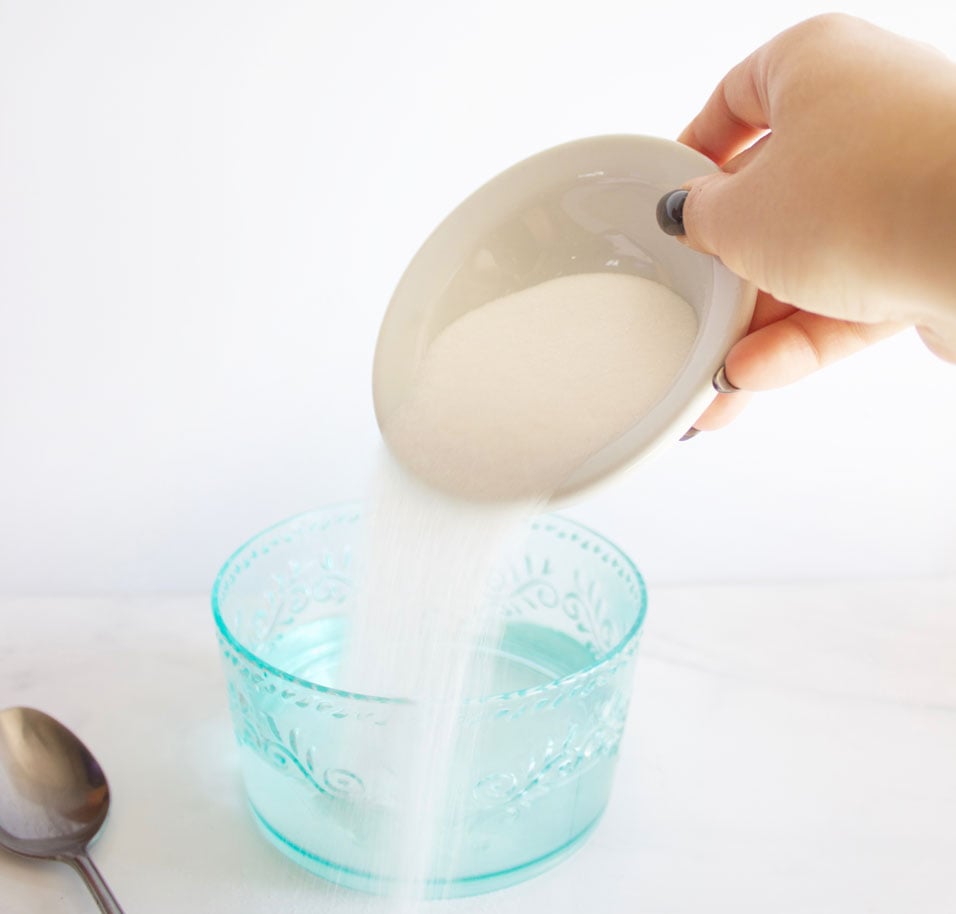
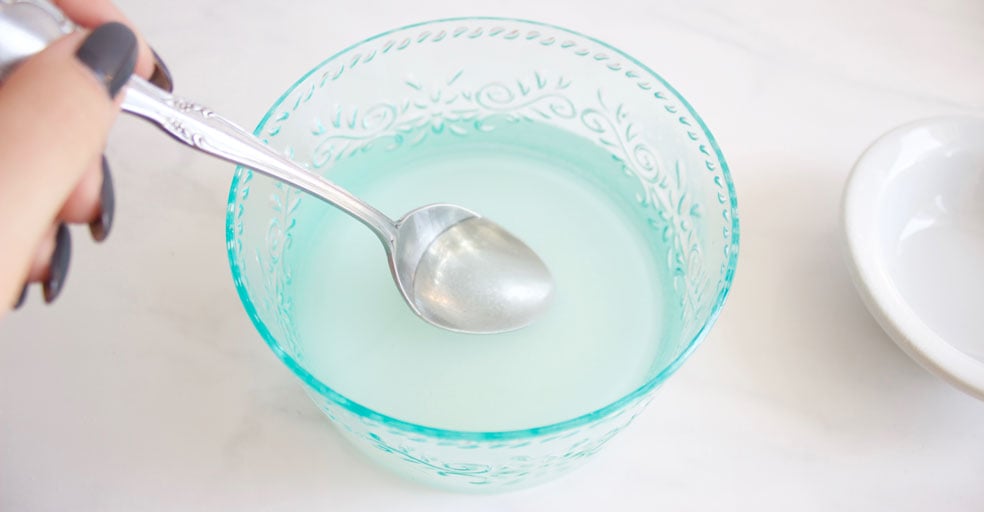
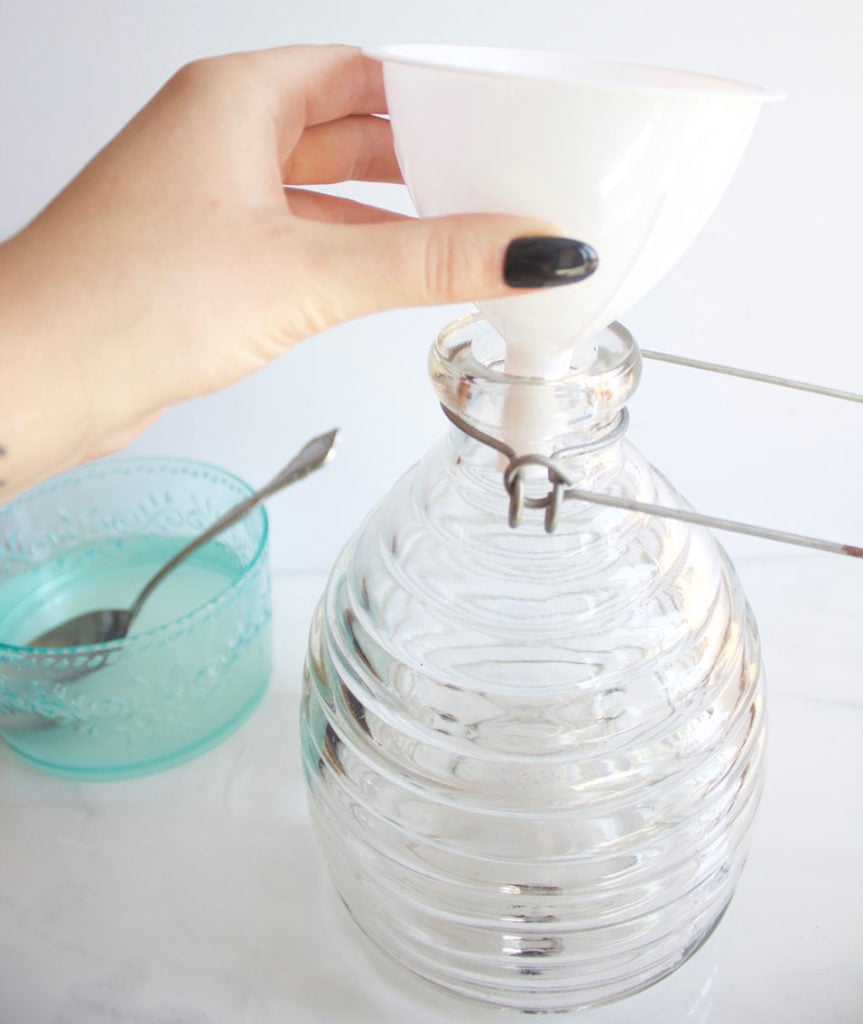
Make sure you hang your bee catcher high up, and make sure it is away from where you are going to be sitting because you will get a ton of bugs swarming the area. Keep it away from your deck or porch area.
Tips and Variations for Success
To get the best results from your homemade bee trap formula, try these helpful tips and creative variations. Small adjustments can make a big difference depending on your local bee or wasp activity.
Tips for Better Trapping
- Use fresh ingredients - Replace the trap mixture every 2-3 days to maintain maximum effectiveness.
- Place traps strategically - Set them in sunny spots away from pets, children, and high-traffic areas.
- Use multiple traps - If you're dealing with a large number of bees or wasps, place several traps around your yard or garden.
Simple Variations to Try
- Brown sugar instead of white - Brown sugar has a stronger molasses scent that may attract more insects.
- Fruit juice substitute - Replace the water and sugar with overripe fruit or fruit juice like orange, apple, or grape for a natural attractant.
- Beer or soda - Sweet carbonated drinks like cola or beer also work well, especially for wasps.
- Add vinegar to deter honeybees - If you want to avoid harming beneficial bees, apple cider vinegar helps attract only more aggressive species like wasps and hornets.
By experimenting with different ingredients and placements, you can tailor your homemade bee trap formula to work best in your specific environment.
Safety and Environmental Considerations
While this homemade bee trap formula is a simple and effective solution, it's important to use it responsibly to protect both your family and the environment.
Be Mindful of Beneficial Bees
Not all bees are pests. Honeybees and native pollinators play a crucial role in your garden ecosystems and food production. To avoid harming these important species:
- Add apple cider vinegar to the trap formula-it deters honeybees while still attracting wasps and aggressive insects.
- Place traps away from flower beds, gardens, and fruit trees, where pollinators naturally gather.
- Use traps only when necessary, such as during peak wasp season or in high-risk areas around your home.
Family and Pet Safety
- Keep traps out of reach of children and pets. Place them high up or tucked away from play areas and walkways.
- Avoid using glass containers in areas where they might get knocked over or broken.
- Label your traps if you're using recycled bottles or jars to avoid confusion.
By following these guidelines, you can use your DIY bee trap formula in a way that's safe, effective, and environmentally conscious.
Frequently Asked Questions About Homemade Bee Trap Formula
What is the best homemade bee trap formula?
The best homemade bee trap formula includes water, sugar or honey, dish soap, and optionally apple cider vinegar. This combination attracts nuisance bees and wasps while keeping beneficial pollinators like honeybees at bay.
How do I make a bee trap with a water bottle?
Cut the top third off a plastic water bottle and invert it into the bottom half to create a funnel. Pour the homemade bee trap formula into the bottom, then place the trap outdoors in a sunny area. The funnel shape traps the bees inside after they enter.
Can I use vinegar in a bee trap?
Yes, apple cider vinegar can be added to your homemade bee trap formula to help repel honeybees and attract more aggressive species like wasps. It's especially helpful if you're targeting pests without harming pollinators.
Will this trap harm honeybees?
If made without vinegar, the trap could attract honeybees. To avoid this, always add a splash of apple cider vinegar and keep traps away from flowers, gardens, and beehives.
How often should I change the formula in my bee trap?
Change your bee trap formula every 2-3 days or whenever it becomes filled with insects. A fresh mixture maintains strong scent attraction and keeps the trap effective.
Where should I place homemade bee traps for best results?
Place your traps in areas with high bee or wasp activity-near outdoor garbage bins, patios, or fences-but away from where children and pets play.
In summary, this simple homemade bee trap formula using water, sugar, and dish soap is an effective and eco-safe DIY pest control hack. Try it today and let me know how it worked for your garden!
I hope you have as much success with this combination of ingredients as I do! Let me know in the comments below if you have any other alternative liquid formulas that are non-toxic and homemade to keep those bees away! I hope this homemade bait recipe works for you too!!
If you liked this post, make sure you check out some of my other natural guides, like my Natural Tick Repellent for Kids!
Until next time,
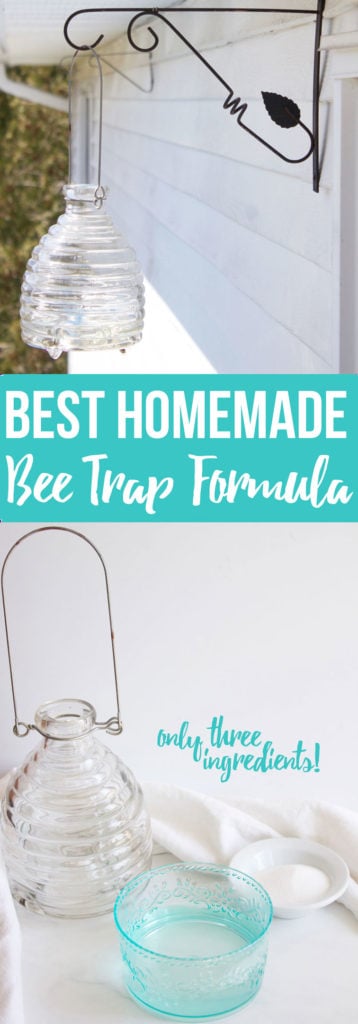
Best Homemade Bee Trap Formula; Homemade bee trap solution for your bee catcher, carpenter bee trap solution, and homemade bait liquid.
As Seen on TikTok
Come behind the scenes of our farmhouse build, decor projects, and cozy everyday life. Tap a video to watch, then follow @nikkisplate on TikTok for more.
Watch this video on TikTok
Watch this video on TikTok
Watch this video on TikTok



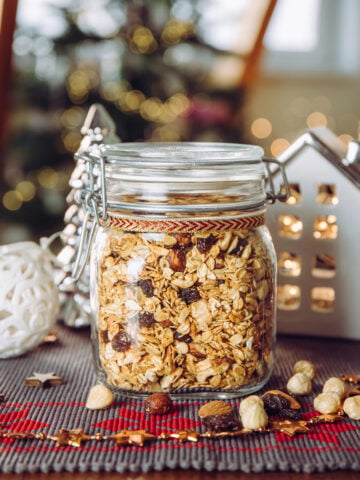

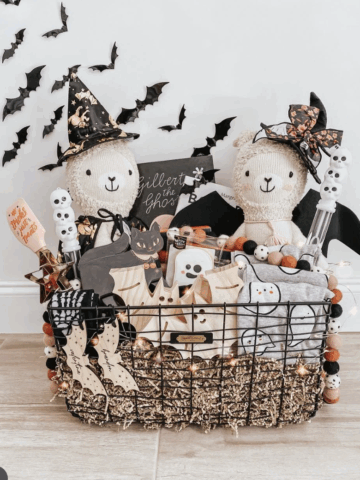
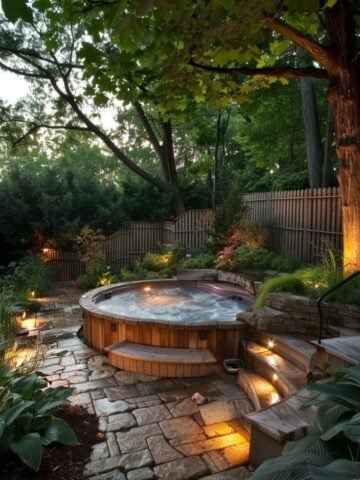
Jean says
I like the idea of your formula but you do not give the measurements/ratio of water, sugar & lemon juice. Can you please provide that? Thanks
Nikki says
1/4 cup White Sugar
1 tbsp Lemon Juice
1 cup Warm Water